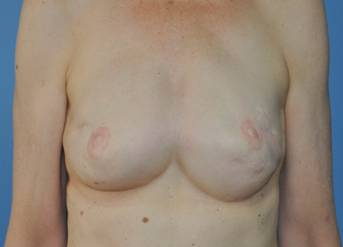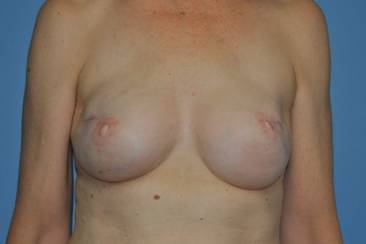
|
|
|
The Neosubpectoral Pocket- Expanding the Indications in Reconstructive Breast Surgery Donald Morris, MD, Michael Tantillo, MD. Harvard Medical School, Brookline, MA, USA Background: Spear, et al. have described the neosubpectoral pocket repair of symmastia occurring post bilateral breast augmentation1. This technique can be modified for use in the post mastectomy patient. The repair of symmastia post reconstruction can be repaired utilizing a modification of this technique. In addition, the neosubmuscular pocket can be useful in altering the inferior mammary fold and correcting inferolaterally displaced implants. Methods: A retrospective analysis of 10 patients presenting for correction of implant malposition following implant based or latissimus flap with implant reconstruction was performed. Correction is afforded by relocating the anterior capsule posterior to the implant. The dissection of the anterior capsule is carefully controlled limiting the medial extent of the neosubpectoral pocket for correction of symmastia. In addition, similar limited dissection can be done inferolaterally, in order to control inferior and lateral migration of the implant. Should the lateral and inferior capsule be found to be properly placed upon implant removal, the anterior capsule can simply be split sagitally at the mid clavicular line leaving the implant in the original pocket inferolaterally and in the neosubpectoral pocket medially. Should repair be needed in the inferolateral position, then the capsule can be transected transversely allowing for the inferior portion of the anterior capsule to be transposed inferiorly. In addition the anterior capsule (which is now sitting posterior to the implant) can be pulled firmly sutured to the prior posterior capsule/chest wall successfully anchoring the medial, inferior and/or lateral most borders in a stable position. Follow up is from 1-23 months. Results: All 10 patients have had successful correction of the implant malposition using this technique. Conclusions: Avoidance of the use of a biological implant such as Alloderm® is a key benefit. Biological implants are expensive and have been associated with an increased infection rate when placed around implants. In addition, if the inferior and lateral aspects of the existing implant pocket are satisfactory then these can be salvaged with this modification of Spear's original technique. This technique is simple to perform once the "layers" involved are well understood. Back to Annual Meeting
|
||||||||
 |
 |
 |
 |
 |
 |
© 2025 Northeastern Society of Plastic Surgeons. All Rights Reserved. Privacy Policy.

